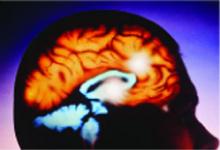A study by Sarpata et al also supports the argument that TBI leads to criminality.5 They argue that TBI patients should be expected to commit crimes because they have poor cognitive skills, impulsivity, and increased aggression, as well as low tolerance for frustration and poor judgment. In their study of 18 subjects in a community corrections day program in Vigo County, Indiana, they found that a large percentage of offenders (50%) reported head injury.5 In contrast, the prevalence of head injury in the general population is 2%to 5%.
By self-report, the TBI offenders at the day program had worse cognition, greater lability, and more aggressiveness than non-offenders and non-TBI offenders. They concluded, “it would appear that had most of these people not experienced a head injury, they may not have become offenders.”5 The Sarpata et al study did not involve an imprisoned population; therefore, these offenders did not become brain-injured while incarcerated. They argued that TBI patients may have more difficulty understanding the legal process, are less able to assist with their defense, and thus are more likely to be found guilty than are suspects without brain injury. The authors recommended cognitive rehabilitation as a way to reduce the propensity for crime.
In a report of the Vietnam Head Injury Study, Grafman et al concluded that ventromedial frontal lobe lesions could result in violent behavior because frontal lobe damage makes it more difficult for the brain to access social skills leading to disinhibition and aggression.6 In this study, 279 Vietnam veterans with a history of TBI were matched with 57 healthy people, based on age, education, and length of Vietnam experience. Each received comprehensive testing, including neuropsychological and personality testing. Family members completed questionnaires, which were rated on the Katz Adjustment Scale (KAS), including the Any Violence Scale and the Extreme Violence Scale, to assess aggressiveness.
Based on the observations of family members through the KAS, 14% of the group with frontal lobe injury exhibited physical violence compared with roughly 5% of the controls. These findings were independent of education, IQ scores, or Beck Depression Inventory scores. Patients with lesions in the mediofrontal and orbitofrontal regions had higher Any Violence Scale and Extreme Violence Scale scores than the control group, as reported by family members.
“Knowledge stored in the human prefrontal cortex plays a managerial role in the control of behavior and takes the form of mental models, thematic understanding, plans, and social rules,” the authors said.6 They theorized that a prefrontal cortex lesion would hinder the ability to manage one’s instincts, leading to impulsivity, aggression, and violence. However, all patients with ventromedial prefrontal cortex lesions did not display aggression or violent behavior. Further, patients with lesions elsewhere and some normal subjects displayed aggressive and violent behaviors.
Martell estimated the prevalence of organic brain dysfunction in maximum-security forensic psychiatric patients at the Kirby Forensic Psychiatric Center on Ward’s Island in New York City.7 Of the 50 randomly selected patients, 22% had a history of a head injury in which they lost consciousness. Whereas 84% had a history of some sort of brain impairment, only 16% were given an organic diagnosis.
“All of the subjects with a DSM-III-R diagnosis of organic brain disorder had been arrested and charged for violent crimes. Of these patients, 75% were charged with murder, manslaughter, or attempted murder. The remaining 25% were charged with violent sex offenses,” said Martell, arguing for a more careful evaluation of organic brain impairment in forensic evaluations.7
Lewis et al evaluated the neuropsychiatric status of 15 death-row inmates.8 All had reached the final stage in the legal process prior to execution, and 4 had been executed by the time the study was published in 1986. All 15 had a history of TBI as evidenced by objective findings of scars, skull indents, neurologic findings, records, collateral from families, and neuroimaging. During childhood, for instance, one inmate had been beaten in the head by 2-by-4s and fell into a pit, with loss of consciousness for several hours. As an adult, he was in a motor vehicle accident, resulting in an injury to the right eye, and later fell from a roof after a blackout. Other inmates had seizures, abnormal CT scans, positive Babinski signs, ankle clonus, skull defects, and various other neurologic signs.
“When the Supreme Court reinstated the death penalty, it provided that there be a separate sentencing in which mitigating circumstances could be explored. Any evidence of mental disease or defect, including any evidence of central nervous system dysfunction, would be relevant to such hearings, since such disorders affect judgment, reality testing, and self-control,” the authors said.8


